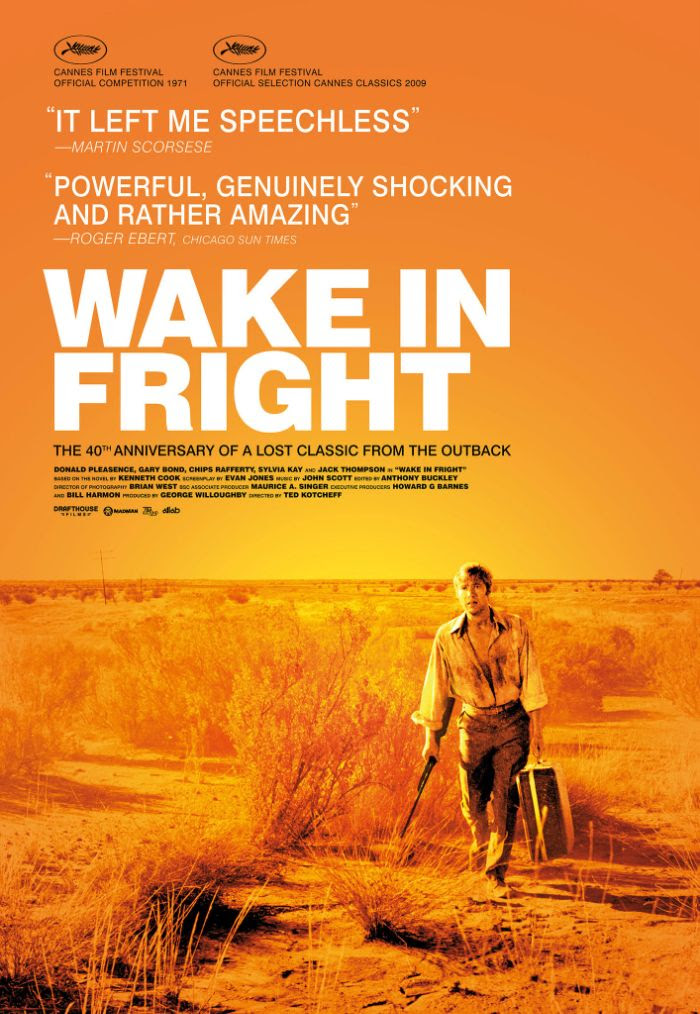
Wake In Fright
A film by Ted Kotcheff
Everything about Wake in Fright is hot. From the color pallet to the one dollar steak, rare is the scene when a character’s not sweating. Christmas in central Australia, where the movie was shot in Broken Hill, often reaches 100º. People die from heatstroke there, and if life were really anything like Wake in Fright, maybe death wouldn’t be a bad thing.
John Grant, a schoolteacher played by British actor Gary Bond, is on Christmas break from a teaching assignment at a remote outpost. On the train out, Grant puts on sunglasses and immediately it’s clear he feels superior to the dust and the flies and the sun-damaged men who sit on the coach beside him singing “old gray mare / she ain’t what she used to be.”
Grant gets to Bundanyabba, a thinly fictionalized Broken Hill, and goes out for a drink. A cop lights his cigarette at the bar, and calls him mate. He buys him one beer, and then another. Soon it becomes clear that the local etiquette of mateship dictates that if a man wants to buy another man a beer, he better well drink it. Director Ted Kotcheff estimated that Chips Rafferty, the actor playing the cop, had to drink about thirty pints. When he tried to give him non-alcoholic beer, Rafferty, once called “the living symbol of the typical Australian,” said, “I can’t act with non-alcoholic beer. I need real beer.” Beer is in many ways the catalyst for what degradation ensues.
Grant gambles all his money away on two-up, a drunken hours-long and often violent game of flipping a coin, and it becomes apparent that he isn’t getting out of the mining town soon. More men buy him beer. He drinks it. Violence lurks under the insistent and constant utterance of the word mate.
The film’s turning point, when Grant loses all sense of superiority and gives in to his animal instincts, is also its most controversial. Kotcheff asked sixteen local hunters if he could film them on their nightly kangaroo hunting routine, and they agreed. The hunters asked where to shoot the animals, in the brain or in the kidney, and Kotcheff told them to pretend like he wasn’t there. Whether they pretended or not, the hours-long killing, skinning, and decapitation of kangaroos eventually made the movie’s British producer faint. People still walk out during the hunt scene, even though the act is documentary, and not meant to be pleasant.
Excepting the score, a kind of bouncy-cum-demented take on the theme of Midnight Cowboy, none ofWake in Fright is pleasant, really, but it is a masterpiece. It’s a tone-poem in the...
You have reached your article limit
Sign up for a digital subscription and continue reading all new issues, plus our entire archives, for just $1.50/month.
Already a subscriber? Sign in




